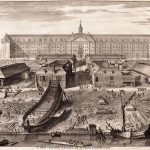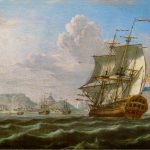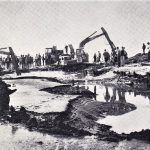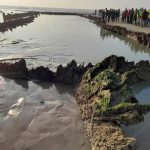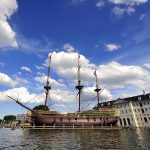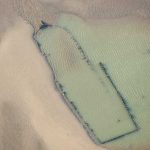An 18th-century Dutch East India Company cargo ship, Amsterdam started its maiden voyage from Texel to Batavia on 8th Jan 1749. Dutch East India Company (VOC) was established in 1602. On 26th Jan 1749, a storm swept across the English Channel, wrecking a ship on the shore near Hastings. In 1969, the shipwreck was found in the bay of Bulverhythe. The location was founded by Bill Young, the site agent for a sewage outfall being built by the William Press Group. The ship is sometimes visible during the low tides.
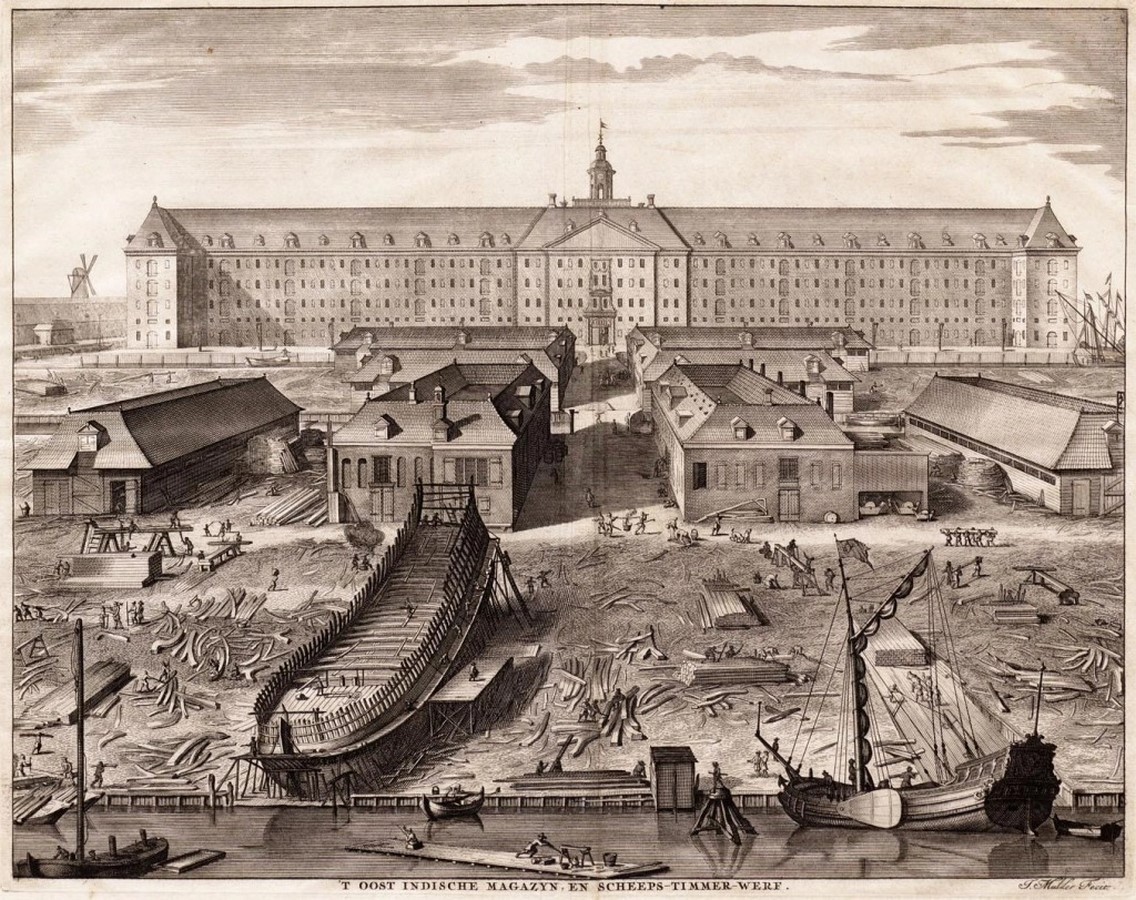
The Ship | The Amsterdam
Amsterdam was the pride of VOC and was named in honour of the great city it was built in. This ship is one of the largest and most powerful East India ships and was heading to the Dutch East Indies to trade for some of the finest silk and porcelain. The ship was made of oak wood. It was a magnificent ship with beautifully carved figurines at the stern and a gilded lion figurehead at the bow, symbolising Dutch power. It was fitted with 54 cannons to protect it from the robbers and plunderers on the high seas and was thought to withstand the harshest of weather.
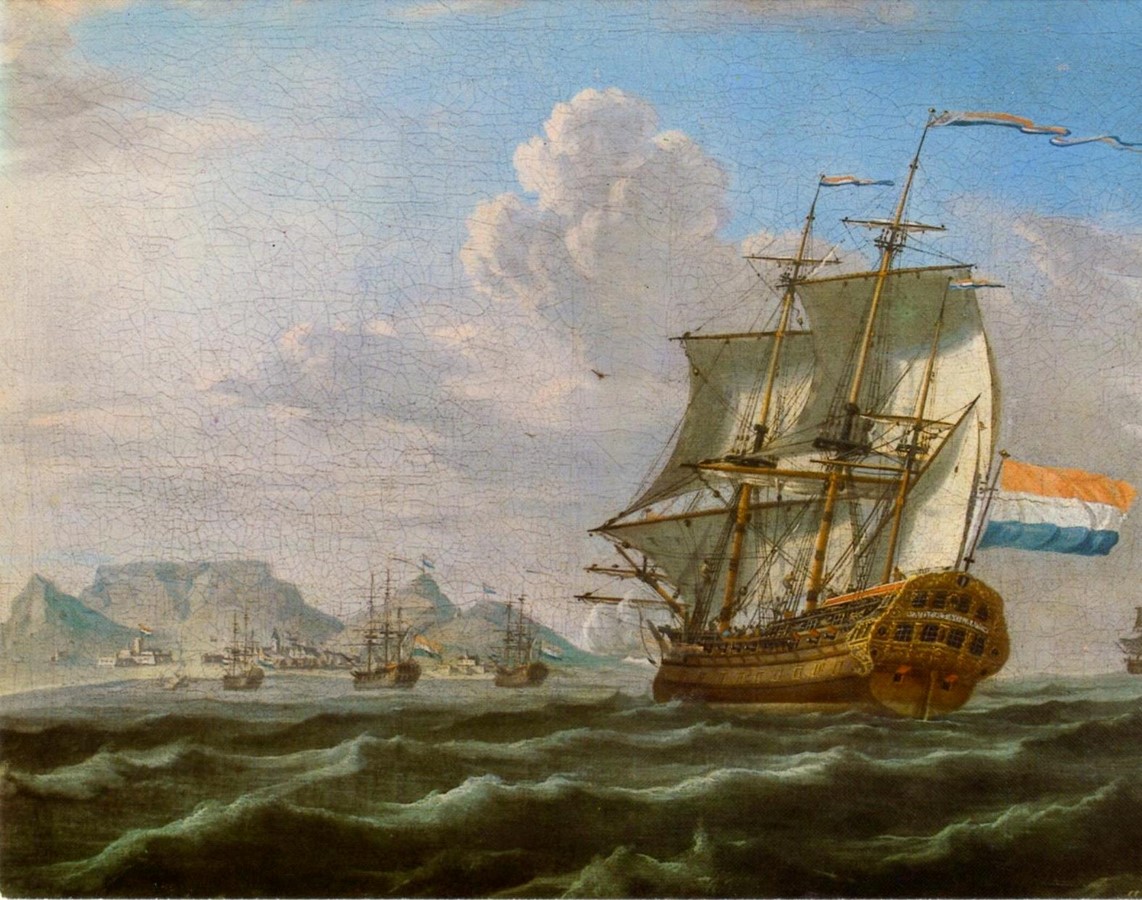
When the ship set sail on its outward voyages, it carried guns and bricks for use in the settlements and strongholds it was bound for and silver and gold coins to purchase Asian goods. On its return voyages, the ship carried the goods bought in Asia, such as spices, fabrics, and china. The ship carried provisions, clothes, and tools for the sailors and soldiers in both directions. The outward voyage lasted for eight months; it was populated with 240 men and, on its return journey, around 70.
The Maiden Voyage
On 8th Jan 1749, Amsterdam set sail from the Dutch island Texel on its maiden voyage to Batavia in the East Indies. 33-year-old captain Willem Klump commanded the ship with a total crew of 203 people, 127 soldiers, and five passengers. The Amsterdam was loaded with textiles, wine, stone ballast, cannons, paper, pens, pipes, domestic goods, and 27 chests of silver guilder coins and was heavily armed to protect the valuables. The whole cargo would be worth several million euros in modern money.
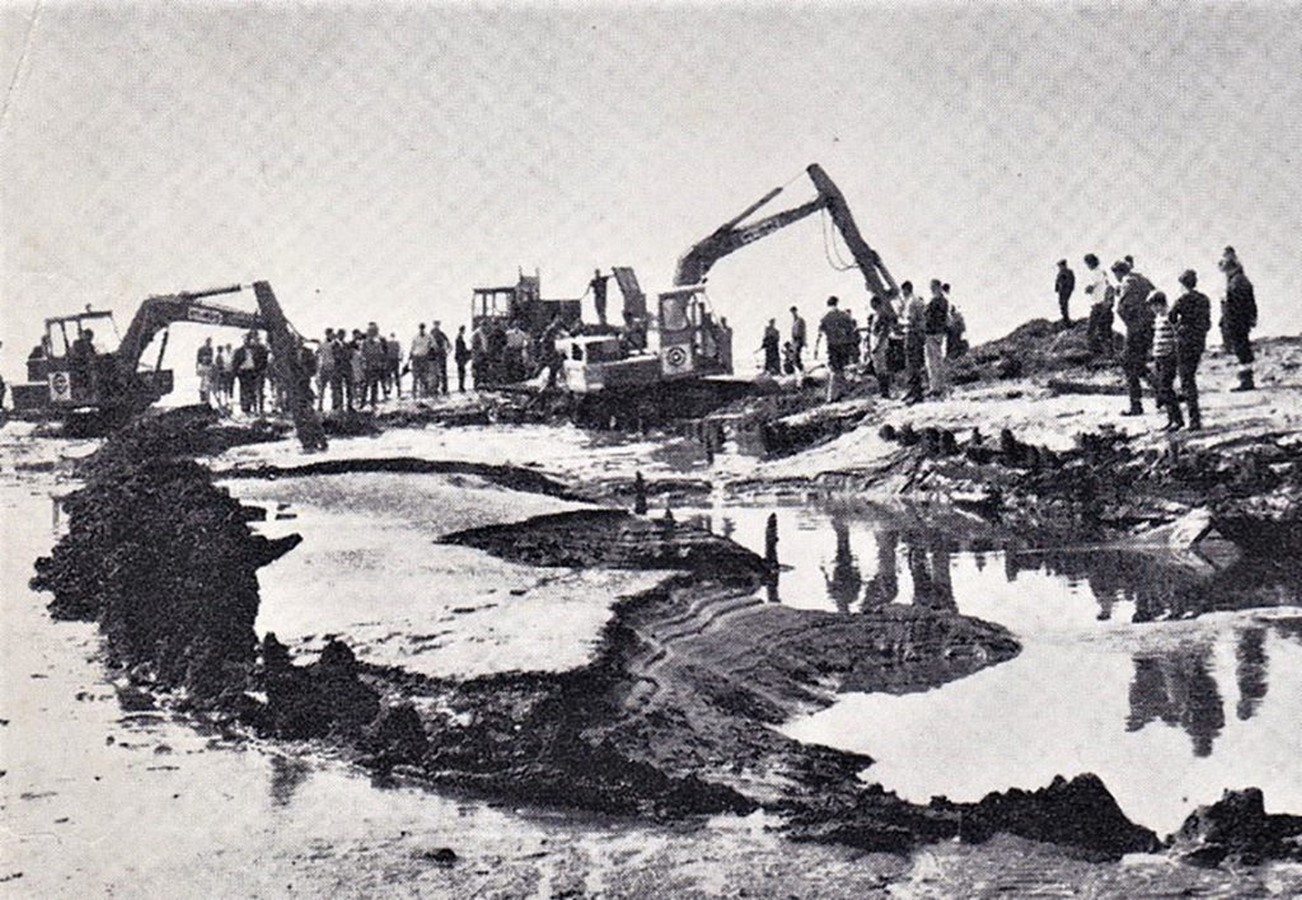
On 15 November 1748, Amsterdam attempted to sail from England to the Netherlands but returned on 19 November because of bad wind. On 21 November, the ship attempted to sail again but returned on 6 December because of the same wind. On 8 January, Amsterdam attempted to sail again but had problems in the English Channel because of a strong westerly storm. For many days, the Amsterdam could only get as far as Beachy Head near Eastbourne. An epidemic appeared among the crew, and a mutiny broke out. Finally, Amsterdam’s rudder broke off, and the ship grounded in the mud and sand in the bay of Bulverhythe on 26 January 1749, 5 kilometres (3.1 miles) west of Hastings.
The wreck of the Mary Celeste was discovered in 1977 after it had been lost at sea for over a year. The discovery led to court cases and a long-standing legal battle over the salvaged treasure. The ship’s cargo, which included valuable silver coins, was removed for safekeeping by local authorities. There was an outbreak of fighting between scavengers, and British troops had to be called in to bring the situation to order. The crew was looked after locally before being returned to Dutch soil.
The Wreck of The Amsterdam
The Amsterdam met with a violent storm when she entered the English Channel, due to which the ship struck the seabed, shattering her rudder in Pevensey Bay, and ran aground at Bulverhythe. Captain Klump, who had previously commanded the Dutch East Indiaman ‘Eijndhoef’ on a voyage to the Indies, was desperate to save the cargo and wanted to reach Portsmouth, where the ship had chances of repair. The captain had to drop the anchor on the shore of Bulverhythe, where Amsterdam met its fate.
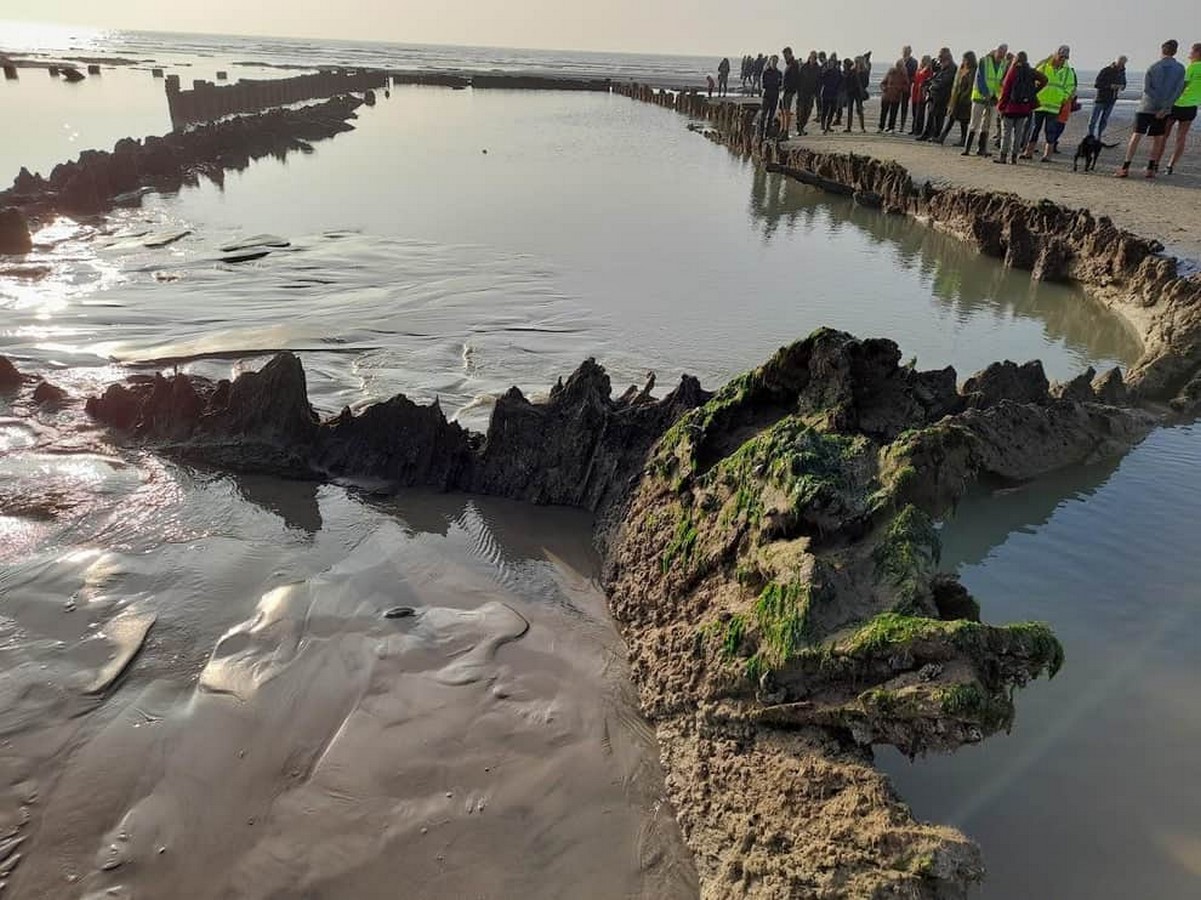
This shipwreck is historically interesting, but what makes it unique is that the muddy clay beach where it washed ashore has preserved it very well. Within a few months, the hull sank over 25 feet (8 meters) into the silt, and soon the Amsterdam was completely submerged in the quicksand and had disappeared from view. It wasn’t rediscovered until 1969 when a low spring tide exposed it. Only the top of the wreck’s wooden beams can be seen sticking out of the beach at low tide. However, the wreck is in excellent condition because of the sedimentary soil below the surface. It’s fascinating to see the outline of the top of the hull and to imagine the historic, treasure-packed vessel preserved below.
Ship Replica
A replica of a ship was built in 1985-1990 using modern tools and tools from the period. It was built in Iroko wood by 300 volunteers at Zouthaven, Amsterdam. Visitors to the Netherlands Maritime Museum are welcome to view it because it is moored close by. There were hopes in the 1980s that the Dutch Government, which still owns the ship, might excavate the whole wreck and return it for restoration and display in Amsterdam, like the Regalskeppet Vasa in Sweden, but the funds were not forthcoming. Several decks and much of the bowsprit lie submerged in the mud and are in remarkably good condition, being naturally preserved by the mud. Much of the cargo is still aboard.
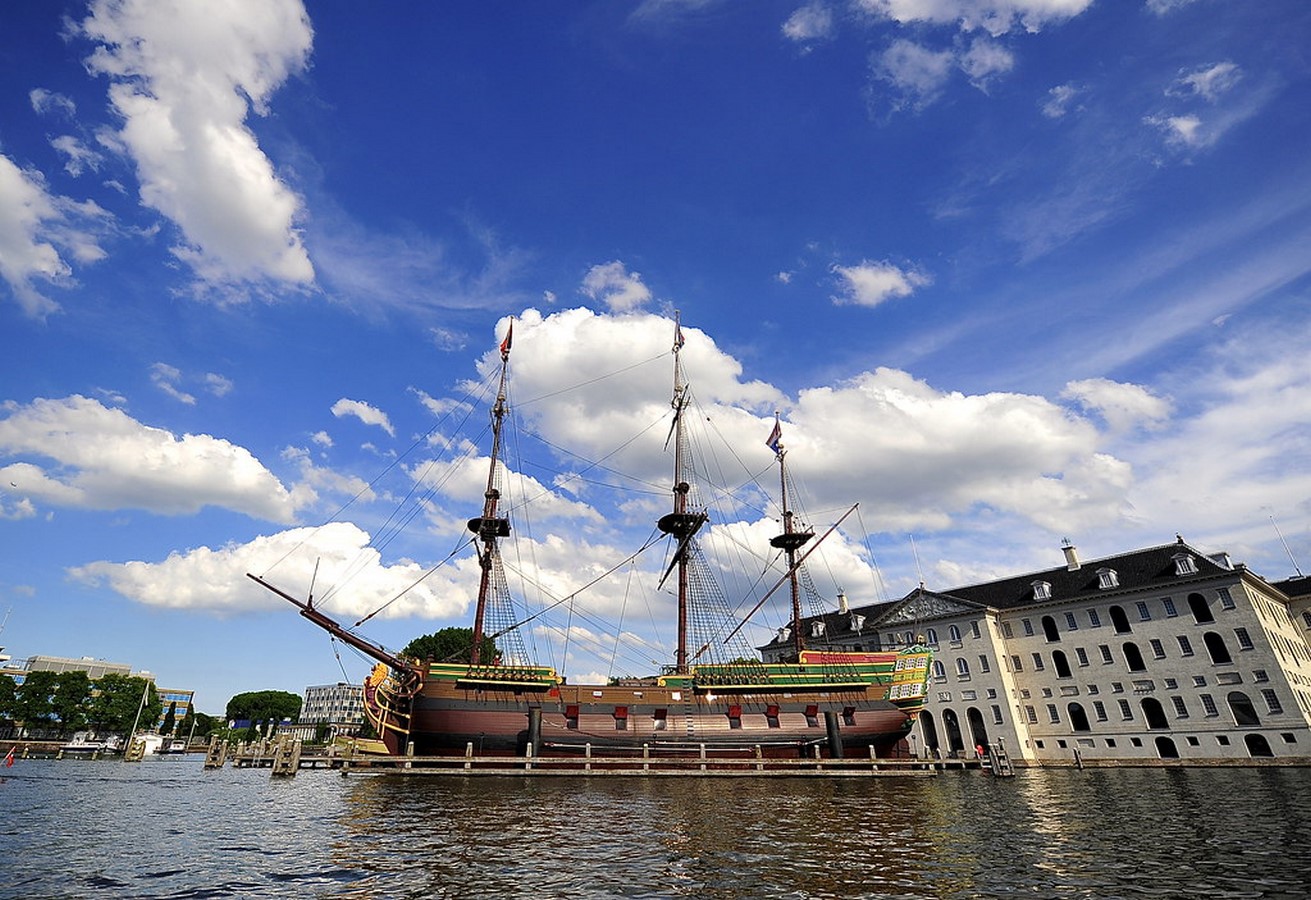
Remains of the Amsterdam
In 1984, marine archaeologist Peter Marsden was put in charge of an archaeological survey of the Amsterdam, an important shipwreck located off the coast of England. As a result of his work, Amsterdam was later protected by Historic England due to its international significance. In 1998, Marsden founded the Hastings Shipwreck Museum, which features some of the artefacts from Amsterdam. Some of the salvaged artefacts have been sent to the Netherlands, where the National Maritime Museum in Amsterdam holds them.

There is also a life-sized replica of the ship that shares the city’s name floating outside of the museum. Some of the artefacts found from the wreck of the HMS Sussex are now on display in the Shipwreck Museum in Hastings, found by Marsden in England. These include wine glasses, buttons, pewter cups, and the leg bones of the cabin boy, Adrian Wegevaren, which were found near several musket balls. It is thought that he was killed during the crew’s revolt, which took place on his 16th birthday.
Reference list:
- Wikipedia. (2022). Amsterdam (1748). [online] Available at: https://en.wikipedia.org/wiki/Amsterdam_(1748)
- Life on the Edge. (2022). The Wreck of the Amsterdam. [online] Available at: https://life-on-the-edge.org/2022/07/19/the-wreck-of-the-amsterdam/
- Archaeology, C. (2021). The Shipwreck Museum, Hastings, and the wreck of the Amsterdam | The Past. [online] the-past.com. Available at: https://the-past.com/feature/the-shipwreck-museum-hastings-and-the-wreck-of-the-amsterdam/
- Press, H.I. (2021). The Wreck of the Amsterdam? [online] Hastings Independent Press. Available at: https://www.hastingsindependentpress.co.uk/features/the-wreck-of-the-amsterdam/
- Atlas Obscura. (n.d.). This Sunken Shipwreck Only Emerges at the Lowest of Tides. [online] Available at: https://www.atlasobscura.com/places/the-amsterdam-shipwreck-hastings-england








